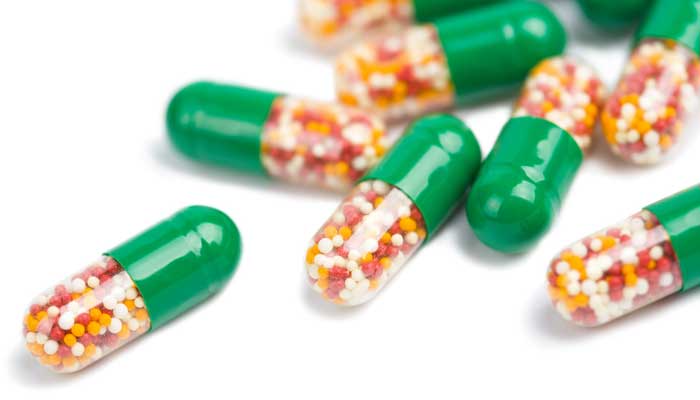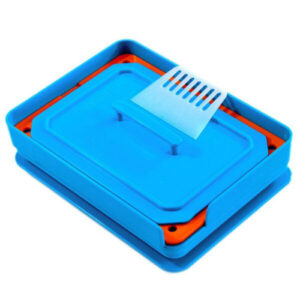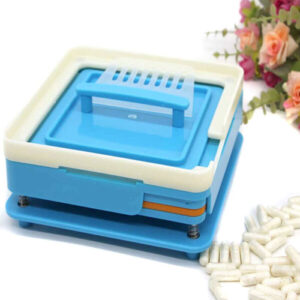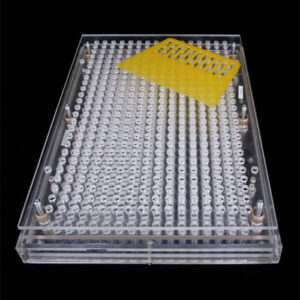Whether you are filling capsules manually or using a fully automated capsule-filling machine, there are several key considerations. Those factors include storage conditions for the empty capsules and the type of powder you are filling.
Manual filling of powder
Using manual filling of capsules is not considered a best practice by those skilled in the art. Moreover, the manual filling process cannot provide high reproducibility due to human errors. However, there are some innovative technologies and devices, which can improve the quality of the product and save a significant amount of time. Some of these technologies include automatic capsule dosage adjustment and electronic liquid dispensing systems.
Automatic capsule dosage adjustment is a novel method to achieve a precise dosage of a drug solution. This technique allows the dosage of a drug solution to be adjusted in real-time, as opposed to the time-consuming process of adjusting the dosage with each individual capsule. This technique has some merits for the pharmaceutical industry, such as reducing material loss resulting from manual adjustment, and the quality of the product. This technology has an industrial application in the manufacturing of hard capsules with individualized dose strengths. It can also be used for the production of smaller batches, such as clinical trials, which require the accuracy of a machine.
The electronic liquid dispensing system is a novel device that was invented by Waldeck & Saar. This device was designed to produce the best possible dose of the drug solution. The system was tested in the laboratory to compare it to a conventional manual preparation method using a Hamilton syringe. The system was able to produce capsules with individual dose strengths that met all the criteria required by the pharmacopeia. It was also able to produce the smallest possible dose of the drug solution.
-
400 Holes Capsule Filling Machine Size 00$175.00
-
200 Holes Capsule Filling Machine Size 0$75.00
-
100 Holes Capsule Filling MachineFrom $35.99
The most significant innovation was in the software that is used to calculate the best possible dosage. The software uses a series of algorithms to calculate the most effective dosage for a specific capsule. The algorithm is designed to avoid the most common pitfalls associated with manual capsule dosage adjustment. A special board was constructed to hold the capsules in place while the powder was dispensed. This board was tested and subsequently certified by GMP standards. The board was fitted with a stepping horse motor which could be adjusted after the test. The most important aspect of the stepping horse is its ability to dispense the drug solution in large quantities, and in a fast and accurate manner.
The most important benefit of the ELMS is that it allowed for the production of large quantities of capsules in a relatively short time, as opposed to the manual filling of capsules. The machine also showed impressive extrusion accuracy, allowing for the production of highly concentrated drug solutions, which is an essential ingredient in any pharmaceutical process. This is important to those who produce drugs with a narrow therapeutic window. For example, overdosing can be dangerous for drugs with a limited therapeutic window. The machine also helped to reduce the risk of capsule shell deformation.
Fully automatic capsule-filling machines
Whether you are just starting out in the pharmaceutical industry or expanding your business, fully automatic capsule-filling machines can help you achieve a high volume of capsules at an efficient rate. They offer a range of features that allow you to control production factors and create capsules of various shapes and sizes. They are backed by a competent technical support team that can help you solve problems and ensure the best results.
Fully automatic capsule-filling machines are easy to use but require careful maintenance. Clean the machine regularly to prevent the buildup of sediment. In addition, lubricate the gear and groove cam every two weeks. It is also important to clean and lubricate the particle filling system regularly.
Before you begin to use your capsule filling machine, you should clean all residue from the machine. You should also make sure that the hopper and the powder metering plate are in good condition. If they are not, they may be affecting the performance of the machine. Also, make sure that the powder tray is securely fastened to the filler. This will prevent any powder spills.
If you are using a manual capsule-filling machine, you will need to load the powder into the hopper. Then, you will need to load the empty capsules onto the loading tray. Then, you will need to set aside the capsule caps. You can do this by turning the tray to the right to release the capsules.
Capsule-filling machines come in different models. The ProCap model has a capacity of 60 capsules per minute. It is also compatible with a wide range of capsule designs. The SaintyCo CF-75 capsule filler has ten segments and a capacity of 9,000 to 34,000 pcs per hour. It is designed in accordance with CE and GMP standards. It also has a high-quality dosing disk and precision capsule segment.
In addition, a fully automatic capsule-filling machine can produce a variety of capsule shapes, including tamping capsules and capsules with a filling rod. You can also choose to fill capsules with different materials. Depending on the material you are filling, the machine’s fill weight can vary. You should be able to determine the powder’s density and the amount of filling required by inspecting the mesh size.
A manual capsule filler is usually ideal for laboratory and small-scale production. It is also easy to use and requires very little time to complete the process. It is also ideal for applications without external power. However, if you are using a fully automatic capsule-filling machine, you will need to adjust the machine settings to achieve the best results.
Fully automatic capsule-filling machines usually come with preset fill limits. These limits are based on the machine’s speed and the material being used.
Storage conditions for empty capsules
Among the key quality attributes of empty hard gelatin capsules, the disintegration time is considered one of the most important factors. It is known that capsules are hard, and when they are stored in too dry or too hot conditions, they will lose moisture. In addition, it is very important to maintain a high level of relative humidity to ensure that the capsule is soft, pliable, and stable.
The disintegration of a dosage form is a crucial prerequisite for a drug to be released from the capsule. Empty hard gelatin capsules are provided as an excipient for the manufacture of pharmaceutical products. A quality assurance program has been set up to study the performance of these capsules. The aim was to evaluate the criticality of material and process attributes in determining the quality of these capsules.
Capsules are typically packaged in heavy-duty corrugated boxes, which are sealed with food-grade antistatic plastic bags, BOPP, or BOPP/BOPP. The boxes are then transported in reefer container vehicles to ensure that the capsules remain sterile. Capsules are maintained between 10AdegC and 30AdegC. This temperature range is designed to minimize moisture absorption, and minimize physical dimension changes.
Storage conditions for empty capsules are usually indicated on the product label. If they are stored in conditions beyond the recommended range, they may damage their performance on the filling machine. In addition, capsules may become hard or sticky, which can cause the machine stops. The conditions are normally set at 35 to 65 percent relative humidity and 15 to 25 degrees Celsius. However, a number of factors can combine to affect brittleness, including low moisture content, high temperature, and humidity.
Relative humidity should be maintained between 45 and 50 percent. Portable industrial humidifiers are often used to maintain relative humidity within this range. Ideally, capsules should be stored away from sources of water condensation such as radiators, hot water pipes, and direct sunlight. Capsules should also be stored on pallets off the floor to avoid excessive movement.
Temperature is also an important factor in ensuring that empty capsules stay soft and pliable. Gelatin capsules are more susceptible to water vapor than gel capsules and should be kept in a cool, well-ventilated area. If stored in high-temperature environments, gelatin capsules can become cross-linked. Capsules should also be stored away from sources of heat such as radiators and hot water pipes.
A variety of factors can combine to cause brittleness in capsules, including low moisture content, high temperature, and humidity. For instance, gelatin capsules can become practically insoluble in high-temperature conditions. Capsules can also become brittle when stored in dry air. For these reasons, it is important to control humidity in the packaging area. If a capsule is stored at a high temperature, it can become cross-linked and stick together, thereby causing it to become brittle.










